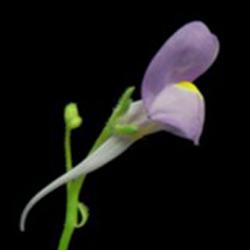Supervisor
Beverley Glover
Brief Summary
This project aims to understand the evolution and development of nectar spurs, because they drive reproductive isolation and speciation in both plants and insects, but their development is very little studied.
Importance of Research
The enormous species diversity of the angiosperms was described by Darwin as “an abominable mystery”. Part of the explanation lies with the ways in which different plant species are reproductively isolated from one another, as a result of divergence of floral morphology and consequent differences in their interactions with pollinating animals. Nectar spurs are outgrowths of the flower, usually of a petal, that either produce nectar or hold nectar that is secreted elsewhere. Only a pollinating insect with a proboscis as long as the spur can access the nectar contained in it. Long-spurred flowers are therefore pollinated by different insects than short spurred flowers. Separation of plants within a family into reproductively isolated groups with different spur lengths and different pollinators results in rapid speciation. Therefore understanding spur evolution and development is central to understanding angiosperm radiation and also provides underpinning data to help manage plant and insect communities.
Project Summary
This project aims to understand the evolution and development of nectar spurs, because they drive reproductive isolation and speciation in both plants and insects. Because no conventional molecular genetic model plant species produces nectar spurs, we know very little about the molecular genetic control of their development. You will explore this developmental genetic problem in the genus Linaria, which has species with a very wide range of nectar spur lengths. This range of spur lengths allows us to take a comparative and evolutionary approach. Fieldwork will be focused on analysing how spur length influences which pollinators interact with a flower.
What will the successful application do?
This project will combine molecular genetic and comparative morphological approaches to analyse spur length evolution, along with detailed field studies to analyse how spur length influences pollinator visitation.
-
Conduct a mutant screen to identify mutants of Linaria vulgaris with altered nectar spur development. Use bulk segregant analysis to identify the genes controlling nectar spur development.
-
Conduct field trials with mutants with altered nectar spurs to compare types of pollinators, pollinator numbers and behaviour in response to alterations in spur morphology. Linaria vulgaris is widespread in Europe but the role of its spurs in restricting pollinators is unknown.
-
Explore the detailed function of the genes you identify by expression analyses and transgenic approaches in Linaria vulgaris.
-
Compare development of closely related Linaria species with different spur lengths, assessing how expression profiles of your key genes are associated with differences in nectar spur length.
Training Provided
The student will be given training in fieldwork analysing pollinator visitation and behaviour, including insect identification. In the lab they will learn light microscopy and scanning electron microscopy, in genetic analysis of trait development, DNA/RNA extraction, Illumina sequencing, PCR, cloning, expression analysis (including quantitative RT-PCR) and plant transformation.

